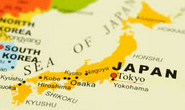Trade Cases

Japan TRQ Officially Goes Into Effect With Biden Proclamation
Written by Michael Cowden
April 4, 2022
US President Joe Biden has officially implemented a tariff-rate quota (TRQ) that will ease Section 232 restrictions on steel from Japan.
“I have determined that imports of specified volumes of eligible steel articles from Japan will no longer threaten to impair the national security,” Biden wrote in a presidential proclamation.
![]() The proclamation is dated Thursday, March 31. The TRQ quota with Japan officially went into effect on Friday, April 1.
The proclamation is dated Thursday, March 31. The TRQ quota with Japan officially went into effect on Friday, April 1.
Details of the agreement – quarterly quota limits and breakdowns individual steel products – are available from US Customs and Border Protection (CBP) here.
Recall that Section 232 tariffs – 25% in the case of steel imports and 10% for aluminum imports – were applied to most countries, including Japan, by the Trump administration in 2018.
The Commerce Department and the Office US Trade Representative on February 7 announced a deal to replace the blanket tariffs with a TRQ, or soft quota.
The TRQ with Japan allow 1.25 metric tons (1.37 million short tons) to be imported tariff free. Any Japanese volumes over that amount remain subject to the US national security tariff.
The US agreed to a similar deal with the EU in late October. The EU TRQ went into effect at the beginning of this year.
The US and the UK have also negotiated a TRQ arrangement that is slated to take effect on June 1.
President Biden in his proclamation indicated that no additional deals would be forthcoming.
“I have determined that it is necessary and appropriate, at this time, to maintain the current tariff level as it applies to other countries,” he wrote.
South Korea, for example, has sought an easing of the absolute, or hard, quota that it agreed to in exchange for exemption for the 25% tariff. A hard quota means no volumes above a specified limit are allowed to enter the US
US trade experts have said that the focus of steel trade talks has shifted from Section 232 to negotiating a “global arrangement” on reducing carbon emissions with the EU.
Those discussions are still in their preliminary phases. And a deal might not be resolved until late 2023. But any C02 pact with the EU could establish a template that could be used with other US trading partners.
By Michael Cowden, Michael@SteelMarketUpdate.com

Michael Cowden
Read more from Michael CowdenLatest in Trade Cases

Commerce launches probe into unfairly traded rebar imports
Here are the details and a case timeline for the rebar trade case recently initiated by the Commerce Department.

Leibowitz on Trade: Who is winning the tariff debate?
Most economists will tell you that universal tariffs will result in inflation and reduce demand, causing a recession or worse. (After all, this is what happened in the 1930s). It is a rare product that is so essential that demand will not go down if prices go up.

Canadian steel industry fears thousands of job losses from US tariffs
The Canadian steel industry is bracing for thousands of job losses because of US tariffs, the Canadian Steel Producers Association says.

US, Mexico mull tariff-rate quota system: Report
Could the US and Mexico end up with a tariff-rate quota system?

OCTG industry salutes Customs for catching trade crooks
The US OCTG Manufacturers Association is commending US Customs for intercepting another Thai company's attempt to illegally transship Chinese oil pipe to the US.
